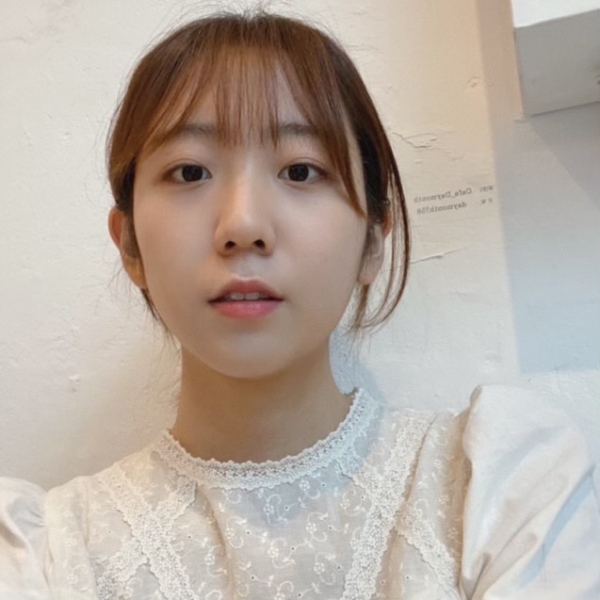Division of English Language & Literature

Division of English Language &Literature
Last October, I went to my aunt’s first private exhibition. In an extremely small area which looks crammed with just three people, various watercolor paintings were displayed in rows. Although she wasn’t a professional artist and was in her late fifties, I was rapidly overwhelmed by the passion for life, love, and tenderness that her paintings evoked.
It was a great shock because I knew what she went through before she started painting. She had a hard time taking care of her sick motherin-law and suffered from a toxic relationship with her husband. Even after her mother-in-law passed away, many wounds in her heart remained unhealed so she spent every day of her life feeling helpless. That time, her sister, my other aunt, encouraged her to join a watercolor painting club instead of passing the time not doing anything at home. As she had no experience in drawing something on a canvas, she was reluctant and skipped several meetings at first. However, thanks to the club members’ warmth and tolerance, she gradually opened her heart and got used to expressing her feelings using watercolor. As time went by, the relationship with her husband improved to the point where he even buys flowers for her and asks her to draw them.
How could such a miracle happen? I think the key point in her recovery is her discovery of expressing herself. Even though she draws natural objects such as flowers and leaves, it is not a simple imitation of images. This is because she chooses what she wants to draw and then portrays it, reflecting her feelings and sensations. She gives meanings to every line she draws and every color she adds. Therefore, her artwork may have reminded her that it is quite amazing and even beautiful to exist as herself. This whole process of expression enabled her to face her feelings, not only bright ones but also dark ones. Every object has a light and shaded side, which also represents the joy and sadness of life that we must embrace in our lives. She accepted the truth by painting and managed to create a balance.
The French-American artist Louis Bourgeois also captured the healing properties of art. Her works on paper created in her final decade, called the suite Turning Inwards #4, involves leaf-and plant-like images, seed-and pod-like forms. They have special meaning to her. In the late 1920s, Bourgeois took care of her sick mother, often using eucalyptus oil for medical purposes. Therefore, for Bourgeois, the image of eucalyptus was a medium that recalls the past to life and a metaphor for the therapeutic function of art. Both my aunt and Bourgeois were healed through art and were able to endure the miseries of their life.
Many psychologists have argued that just expressing one’s emotional state has a positive effect on mental health. There are lots of ways to express one’s inner being, and experts would recommend writing or drawing. There is a huge difference between having the same thought only in one’s head versus having it written on a notebook or drawn on canvas. When people express and visualize their thoughts, they can step back from their situation and think more objectively. In other words, visualization prevents them from being eaten alive by their negative feelings. It is a desirable way to navigate feelings since it doesn’t harm or negatively affect other people’s feelings. Therefore, when one practices this constantly, one can help keep a healthy relationship with loved ones.

